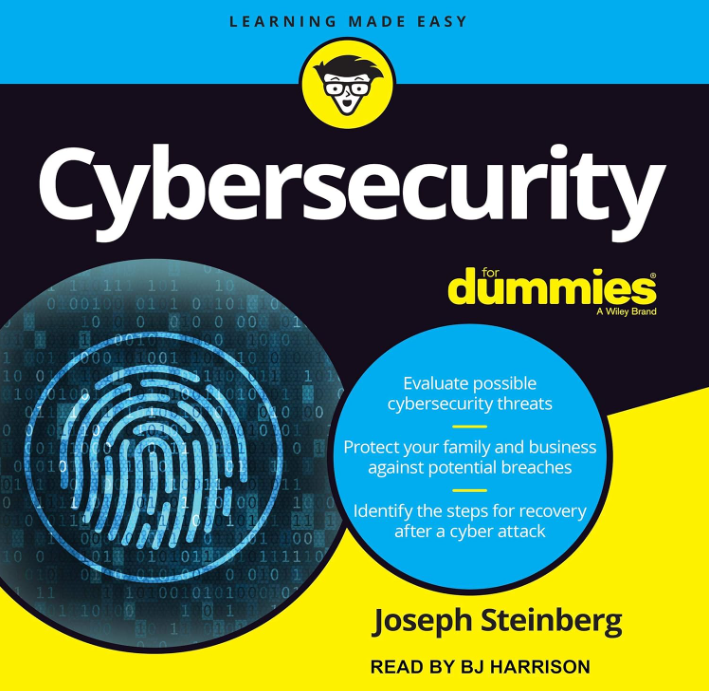Did you know that a ransomware attack happened every 11 seconds in 2021? These attacks caused nearly $20 billion in damages. This shows how widespread and impactful ransomware attacks are. It is vital for both individuals and organizations to shield their data from these online threats.
Ransomware, a highly advanced malware, encrypts critical data and demands a payment for its release. It enters your network through various means, including deceptive emails, malicious websites, and tainted files. Having a strong defense strategy against ransomware is essential to prevent severe data loss.
Key Takeaways:
- Ransomware attacks occur at an alarming rate, with one attack happening every 11 seconds in 2021.
- Ransomware is a type of malware that holds sensitive data hostage until a ransom is paid.
- The most common infection vectors for ransomware attacks are phishing emails, corrupted websites, infected attachments, system vulnerabilities, and remote desktop protocol attacks.
- To protect your data from ransomware threats, it’s crucial to have a robust ransomware defense strategy in place.
- Implementing cybersecurity measures such as regular data backups, system updates, antivirus software, and network segmentation can significantly reduce the risk of ransomware attacks.
What is Ransomware?
Ransomware presents a grave danger to people, companies, and groups around the world. This malware effectively locks and encrypts the victim’s data. This makes the information practically inaccessible unless a ransom is paid to the criminal. These attackers use encryption keys to block access and demand money for data release.
For companies with critical data, the impact of a ransomware attack can be severe. User data and other sensitive information may be compromised or exposed. This puts the organization at risk, potentially leading to data breaches and privacy violations.
When hit by ransomware, victims are left with a tough choice. To pay the ransom with no guarantee their data will be returned safely, or to refuse, possibly losing valuable information. It underscores the need for strong cyber defenses to prevent and deal with such attacks.

Types of Ransomware
Ransomware presents itself in diverse ways, all with sinister goals. Familiarizing yourself with these types equips you to spot and counter their threats to your data and systems.
There are four primary categories:
1. Encryption Ransomware
Among ransomware forms, encryption ransomware stands out. It seeps into systems, encrypts valuable data, and locks the owner out. To unlock their data, victims must pay a ransom to the cybercriminals, who hold the decryption key.
2. Lockers Ransomware
Lockers ransomware seizes control of the victim’s device, demanding a ransom to restore access. It disables vital computer functions, rendering the system unusable until the victim complies with the ransom demand.
3. Scareware
Scareware tricks people into thinking their computer is overrun by malware or viruses. Deceptive pop-ups push users to buy fake software to eliminate these “threats.” Its strategy is built on fear to prompt payments, exploiting the victim’s security anxieties.
4. Doxware/Leakware
Doxware, or leakware, poses a unique danger, threatening to expose sensitive information unless a ransom is paid. It enforces compliance by striking fear of reputational harm or legal consequences, pressuring victims to fund the ransom.
Online criminals are always refining their ransomware tactics to exploit weaknesses and increase their gains. Educating yourself on ransomware types empowers you to detect warning signs early and foil their efforts effectively, protecting your data.

10 Best Ransomware Prevention Practices
Shielding yourself from ransomware demands a mix of solid safeguards. This involves using several top-notch prevention methods. Employing these measures sharply decreases the chance of experiencing a ransomware incident.
- Backup your data regularly: Making data backups on a regular basis is your shield against ransomware. It allows you to retrieve your information safely, dodging the ransom demand.
- Update all systems and software: Regular updates are essential to keep your digital environment secure. They patch up any holes, making it tougher for ransomware to find a way in.
- Install antivirus software and firewalls: A robust defense includes antivirus software and firewalls. Ensure their quality and keep them current to stave off ransomware.
- Implement network segmentation: Segmenting your network can contain a ransomware threat. It stops the virus from easily moving throughout your system.
- Enhance email protection: Bettering your email’s security screenings filters out many ransomware beginnings. It’s an effective means to protect your system from these attacks.
- Use application whitelisting: Only allowing verified applications protects your devices from unwanted ransomware. It prevents unapproved software from causing harm.
- Prioritize endpoint security: Giving high regard to securing each device can keep ransomware at bay. A trusted endpoint security is key, as is keeping it constantly updated.
- Limit user access privileges: The less access users have, the lower the chance of ransomware spreading. It’s essential to control user permissions tightly.
Adopting these strategies creates a potent ransomware defense. It secures your valuable data and lessens the peril of ransomware striking.
Why Are Ransomware Attacks Emerging?
Ransomware attacks gained momentum notably after the WannaCry outbreak in 2017 and the onset of the COVID-19 pandemic. The global shift to remote work due to COVID-19 exposed significant cyber security gaps. This left organizations and individuals vulnerable to cybercriminal exploitation through ransomware.
By 2023, about 10% of the world’s organizations faced attempted ransomware attacks, marking a considerable increase. This surge in incidents underscores the critical need for fortified cyber defenses and proactive security approaches.
Remote work setups present a prime target for cybercriminals due to several inherent vulnerabilities. These include unsecured home networks, lax access controls, and limited oversight on network activities. Thus, cybercriminals find ample opportunities to infiltrate and execute ransomware assaults, risking essential data and operations.
Addressing these challenges necessitates a comprehensive upgrade in cyber defenses. This includes strategies like deploying multi-factor authentication, ensuring software is regularly updated, performing security audits at intervals, and educating employees extensively on cybersecurity. Such proactive initiatives play a pivotal role in mitigating risks and preventing ransomware attacks.
How Does Ransomware Work?
Ransomware functions through three main steps: it first gets into a system, then encrypts the data, and finally, demands a ransom. Grasping these stages is key to defending your data from attacks.
Infection Vectors
Ransomware might enter your system in several ways, like through phishing emails, RDP attacks, or direct system infection. Phishing emails present false information to trick people into opening malicious attachments or links. This allows the ransomware to enter the system. RDP attacks target weaknesses in remote access software. Direct system infection uses vulnerabilities in security systems.
Data Encryption
After entering the system, ransomware quickly encrypts the files with a key controlled by the attacker. This encryption makes the files unreadable, essentially freezing them until decrypted. Data encryption is the linchpin cybercriminals use to demand bribes and maintain power over the victim.
Ransom Demand
Following file encryption, the ransomware presents a financial demand to the user. This request usually involves the payment of a ransom, often in untraceable cryptocurrency, for the decryption key. If the demand goes unmet, cybercriminals might threaten to publicize or destroy the hostage data.
Learning about ransomware’s mechanisms can arm both individuals and companies with the know-how to stave off or counter these attacks. Implementing a combination of solid cybersecurity practices and preventative efforts, such as teaching staff about phishing scams, ensuring the security of remote access, and keeping security systems updated, can significantly mitigate the risk of being hit by ransomware.

Types of Ransomware Attacks
Ransomware attacks are constantly evolving, using new methods to exploit digital weaknesses. They aim to compel victims to pay for the release of their data. Let’s dive into some common forms of these attacks.
1. Double Extortion
In double extortion, cybercriminals first encrypt data. They then proceed to exfiltrate sensitive files. The threat is clear: unless a ransom is paid, this private data will go public.
2. Triple Extortion
Building on the double extortion model, triple extortion intensifies the pressure. It not only includes the encryption and theft of data but also the peril of publicizing it. Failure to comply results in the data being made public.
3. Locker Ransomware
Locker ransomware effectively bars users from their own systems. It’s simpler compared to other forms, focusing on access denial instead of file encryption. Payment is demanded to release the system back to its user.
4. Crypto Ransomware
Crypto ransomware encrypts files, making them off-limits to users. Payment, often demanded in cryptocurrencies, promises the restoration of access. It’s a widespread type of ransomware, popular for its financial anonymity.
5. Wiper Attacks
Wiper attacks deviate from traditional ransomware’s monetary demands. Instead, they focus on destruction, rendering data unrecoverable. The objective is to severely damage, rather than extort, the victim’s digital assets.
6. Ransomware-as-a-Service (RaaS)
Ransomware-as-a-Service (RaaS) expands the reach of these attacks. By providing a network for affiliates, it encourages more extensive deployment. This service is often accessible on the dark web, making initiation more straightforward.
7. Data-Stealing Ransomware
Data-stealing ransomware, as the name suggests, adds an element of data exfiltration. Cybercriminals threaten to misuse the stolen data if the ransom isn’t met. This approach significantly raises the stakes for victims.
Familiarizing yourself with ransomware’s various guises is key to robust cyber defense. Staying current and implementing preemptive security can shield both individuals and entities from the dangers of these attacks.
Conclusion
Ransomware attacks can inflict severe financial and data losses on individuals and businesses. They represent a significant threat that requires proactive measures to mitigate. To safeguard valuable information and enhance cyber resilience, implementing strong security practices is essential.
This involves regular data backups, keeping software updated, and using antivirus protection. Moreover, network segmentation and stringent email protection are vital. These measures help isolate potential ransomware threats and thwart phishing attempts, respectively. Prioritizing endpoint security and restricting user access also play a critical role in reducing attack impact.
Being proactive and investing in cyber security can markedly decrease the risk of ransomware incidents. By choosing effective tools and constantly enhancing your defense strategies, you can fortify your cyber defenses. This approach helps protect your data from the escalating menace of ransomware.



